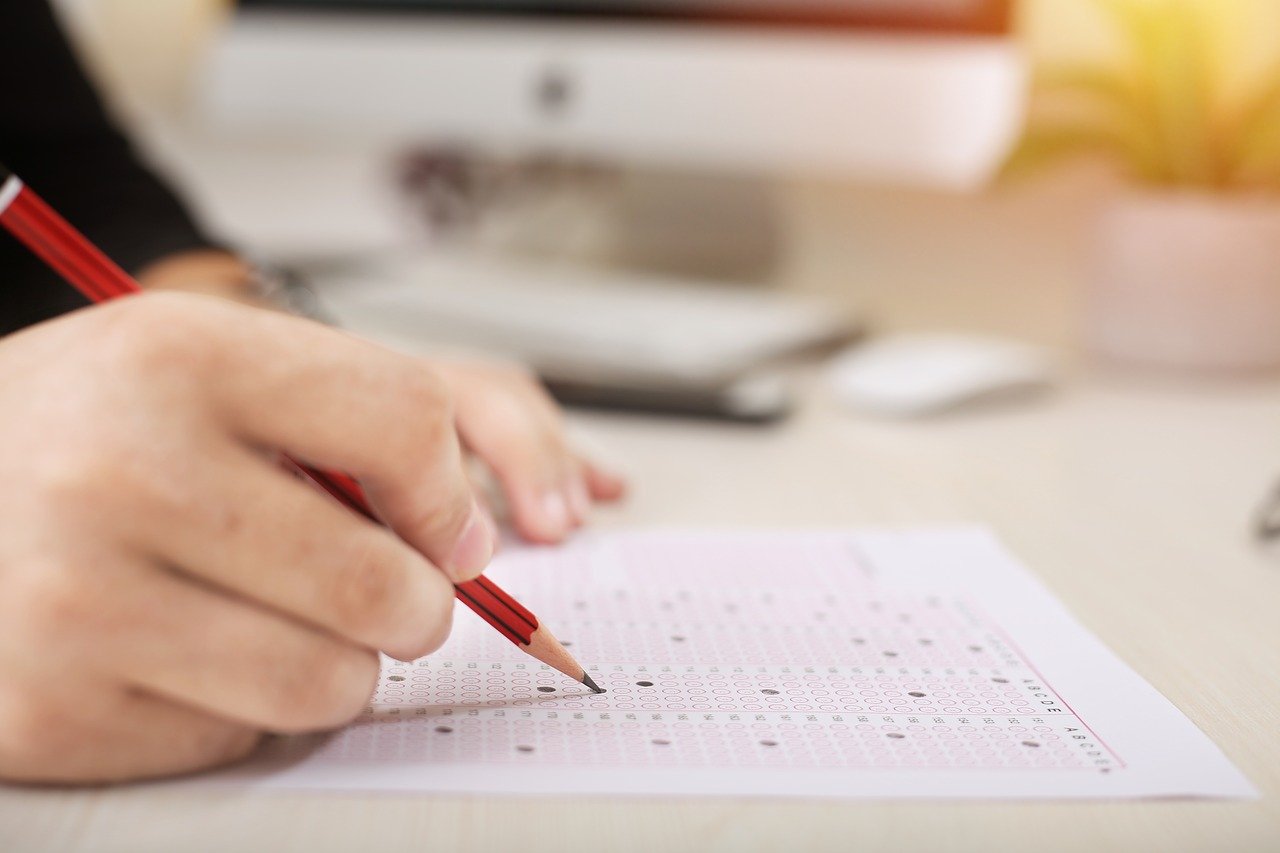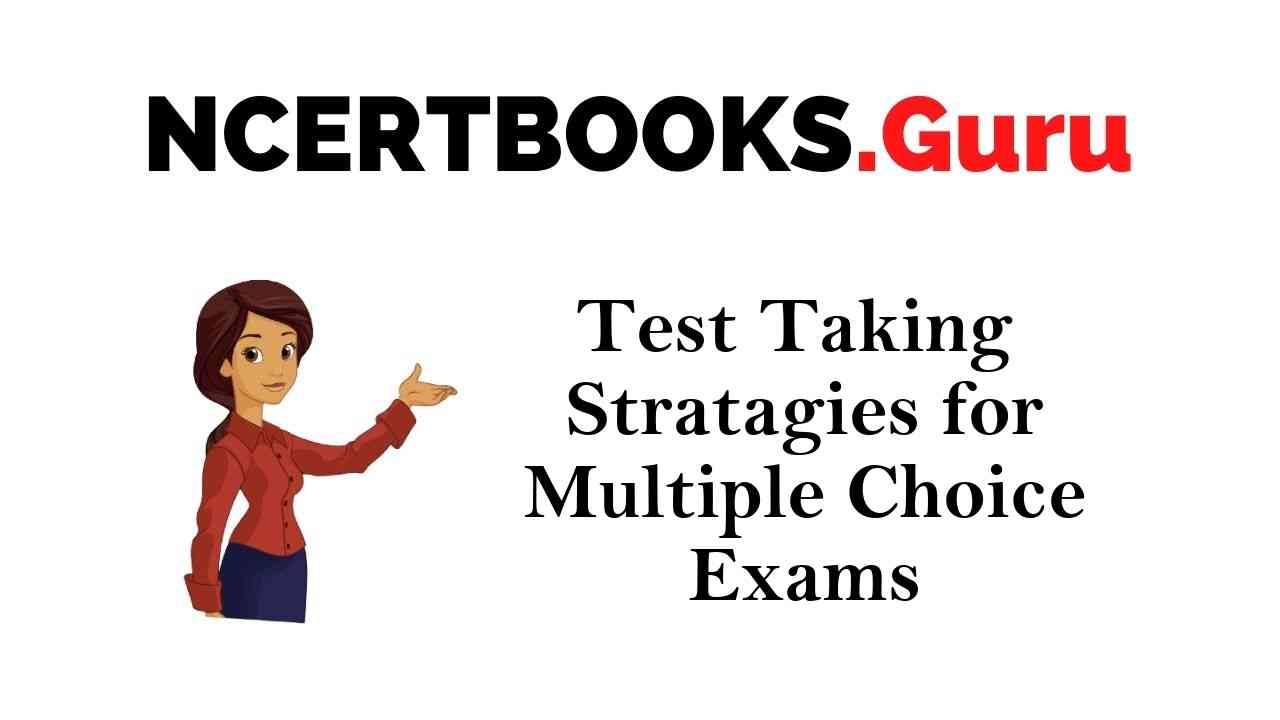Ever got stuck on multiple-choice questions in an exam where you were not sure regarding the answer? Or, you had to dash through the last few questions due to lack of time time.
When faced with such circumstances, the best you can do is eliminate as many options as possible and make a knowledgeable guess.
Gather Information Regarding Basic English Skills and become proficient in the language and speak fluently with confidence. Try the Tips over here and Improve your English Writing and Speaking Skills.
Secrets to Taking Multiple Choice Tests
An educated guess!
Yes, that’s one of the striking multiple-choice test-taking strategies top students follow.
But, are you making knowledgeable guesses?
Or, are you just randomly selecting one of the remaining after eliminating the other options you can?
Here are the given hacks, or you may call them test-taking strategies, for multiple-choice tests – some of them used by myself over the years of experience– you can use it to smart-guess. These strategies are supported by global data, too, which has been drawn by William Poundstone. (He munched statistics on a sample of 100 tests – 34 from schools and colleges and 66 from other vivid sources, consisting of 2,456 multiple-choice questions. These tests comprise middle school, high school, college, professional school exams, driver’s practice tests, US Naturalization Self Test, newspaper quizzes, and many more.)
Without further fuss, here are six hacks you can use when taking multiple-choice tests:
1. How to Guess Answers to true-false Questions?
In true-false tests, accurate (T) answers are more common than false (F): according to Poundstone’s analysis, on average, 56% of answers are T and 44% F.
It’s not hard to see why. Factual statements come to our mind naturally, and hence with less effort, but we need to make up false statements, which needs more effort? No wonder more T answers seep into question papers, as test makers unwittingly take the path of least reluctance.
Another design in true-false tests: two same responses (TT or FF) in a row are less likely than two different responses (TF or FT).
To give an instance from Poundstone’s book, the answer key to 21 questions from textbooks like Plummer, McGeary, Carlson’s Physical Geology, ninth edition)
has:
F T F F T T F T T F T T F T T T F T T F
At first glance, the answers seem to be randomly distributed.
But they aren’t.
In this sequence, two successive responses are the same seven times out of nineteen (the twentieth answer has no successor). The chance that the immediate next answer will be different from the present one is 63% (12/ 19), which is higher than the expected 50% if it was completely random.
Check it out for any test. You’ll find it to be confirmed on most events.
Example
Let’s understand how to work on these two hacks through a hypothetical test with few true-false statements.
Step 1: As always said, first mark the answers you already know. Let’s say you are aware of the answers to questions 3, 5, 6, 8, and 10.
Step 2: Now, let’s come to the questions where you’re clueless. First, pick those whose both the immediate responses are the same (either both are T or F) and choose the opposite of that as the answer. Here, question 7 has its immediate answers T, so pick F as the answer for 7.
Step 3: When preceding and conquering answers are different, pick T as your next response because T is preferable to F. So, we choose T for both 4 and 9.
Step 4: You are now left with the first two questions. Here, True-False will be the best answer, as it’ll form a non-repeating pattern.

2. How to guess answers to multiple-choice questions?
Through his data, Poundstone found the following statistics in case of the multiple-choice questions:
- On tests with the other three choices (say, A, B, and C), all the options were likely to be alright.
- On tests with the other four choices (say, A, B, C, and D), B was slightly more likely to be accurate (28%). Remember, the expected likelihood of every option being correct is 35%.
- And on tests with five distinct choices (say, A, B, C, D, and E), E was the most commonly accurate answer (23%). C was the least (17%). In this case, the expected preference for each option being correct is 20%.
As the number of options increases, the bias toward a particular answer hikes up. To cite Poundstone, “This is in line with experimental findings that the standard of randomizing declines as the number of options hikes up.”
So, B and E are preferred guesses in a 4-option and 5-option multiple-choice tests, respectively, than choosing the middle answer, a typical guess hack, or a random guess.
Like in the case of true-false, here too, Poundstone’s analysis showed that the answers in multiple-choice tests are less likely (than a completely random one) to repeat the previous answer.
He found that the accurate choice repeated the previous answer only on 29% occasions against an expected 33% for three-choice tests. For four-option, 19% (against an expected 25%). And for five-option, 18% (against an expected 20%).
I was wondering how to answer multiple-choice questions using these two hacks?
Here is an example.
Example
Consider the listed three questions (28-30) in a test in which you are aware of answers to questions 28 and 30: B and D, respectively. But the last thing you know about #29 is that option C can’t be the answer.
How can you go about answering question no. 29?
First, strike out any option that you know for sure is not correct. Here, it’s C. Of the enduring three options A, B, and D, you assert one preference to B because B is most likely to be correct (maybe by a little %) in a four-choice exam.
Also, as answers are less likely to repeat, assert one vote to A and hence, none to B and D.
Now, you have one vote each for A and B, and as they get equal votes, choose any of the two as the answer to 29.
Let’s take a further example.
Here, the answers given to both 28 and 30 are A, and you have to guess on 29.
Repeating the procedure we just followed in the previous example, B gets two votes and D.
So, the guess is B, the one with the highest vote.
3. Outlier options are less likely to be accurate
When you have 100 and -10 in your answer likeability, both of them might not be the correct answer. Sometimes when answering the problem seems to be time-consuming, try substituting or reverse calculation. When answer choices are a bit confusing, like 1114 and 1141, students, despite getting the correct answer to mark the wrong answer, regret committing such silly mistakes. In the case of vocabulary, when two words have opposite meanings, one of them is the answer or sometimes might not be. For that, you need to study the of the previous papers and try to answer smartly.
4. General qualifiers are more likely to be accurate
Contrary to popular guess-practice of striking out answers which have universal qualifiers such
Ever got stuck on multiple-choice questions in an exam where you were not sure about the answer? Or, you had to hurry through the last few questions due to lack of time.
When faced with such circumstances, the best you can do is strike out as many options as possible and make an educated guess.
An educated guess!
Yes, that’s one of the clear multiple-choice test-taking strategies top students follow.
But, are you making knowledgeable guesses?
Or, are you just randomly choosing one of the remaining after striking out the options you can?
Here are the hacks, or you may know them as test-taking strategies, for multiple-choice tests – some of them are used by me over the years of experience – you can use to smart-guess. These aforementioned strategies are supported by data, too, which has been drawn by William Poundstone. (He munched statistics on a sample of 100 tests – 34 from schools and colleges and 66 from other sources, comprising of 2,456 multiple-choice questions. These tests also include middle school, high school, college, professional school exams, driver’s practice tests, US Naturalization Self Test, newspaper quizzes, and many more.)
Without further fuss, here are six hacks you can use when taking multiple-choice tests:
5. These hacks are not a replacement for knowing your own subject
No doubt, these hacks are better than blind guesswork. But they can’t replace specific knowledge on a topic.
Moreover, their effectiveness increases when combined with the certainty that eliminates few options or gets neighboring questions right.
6. Longest response is more likely to be
accurate
The most extended response (of course, in non-quant answers) has a greater chance of being the correct one because test makers tend to load the correct response with qualifying language to make it unambiguously correct.
Be Alert:
Be alert when the paper is trying to fool you like the agenda behind these exams is to test your conceptual clarity, smart work, and alertness. For that, you require to be familiar with the kind of questions and act accordingly. So spare time to understand the pattern of the examiner along with the specific learning concepts. So when you are in a dilemma between your logic and knowledge, always go for knowledge.
Time Management:
The most important factor to crack these competitive exams is time management. Sometimes lengthy but easy questions appear in your question paper only because the examiner wants to test whether you are wise enough to sacrifice that question. Maximization of marks is prima facie, and you can satisfy your ego by cracking that typical question at home. Any paper has easy, moderate, and difficult questions; you should be smart enough to answer the difficult and time taking questions at the end. Read the paper thoroughly, prioritize, and then answer the questions.
Conclusion
Smart-guessing is always appreciated than random-guessing, and it can get you those extra, defining marks. Some of the guess-hacks you can apply are:
- In true-false questions, first, T is preferred than F and, second, a TT or FF is preferred than a TF or FT.
- In multiple-choice statements, first, B and E are the most preferred answers in 4- and 5-option questions, respectively and, second, the same answer is least likely to be repeated in the next question.
- Outlier answers are less likely to be accurate answers.
- Multiple-choice questions with general qualifiers such as always, none, never, and all are likely to be correct than other options.
- Grammatical errors such as correct article, subject-verb agreement, or a better overall sentence can sometimes lead you to the correct answer
- The most extended response is more likely to be the correct answer.
All most all competitive exams have multiple-choice questions as a pattern to test the candidates. To be successful in this pattern and be familiar with concepts, one needs to be aware of the time. It is all about time management. Solving this type of examination with a few techniques will unlock doors for your desired college. Besides good preparation, what you need to know is below. If you’re the interested type, you can test these rules on the sample or real tests you plan to take, and you never know, you may unearth a new hack.
